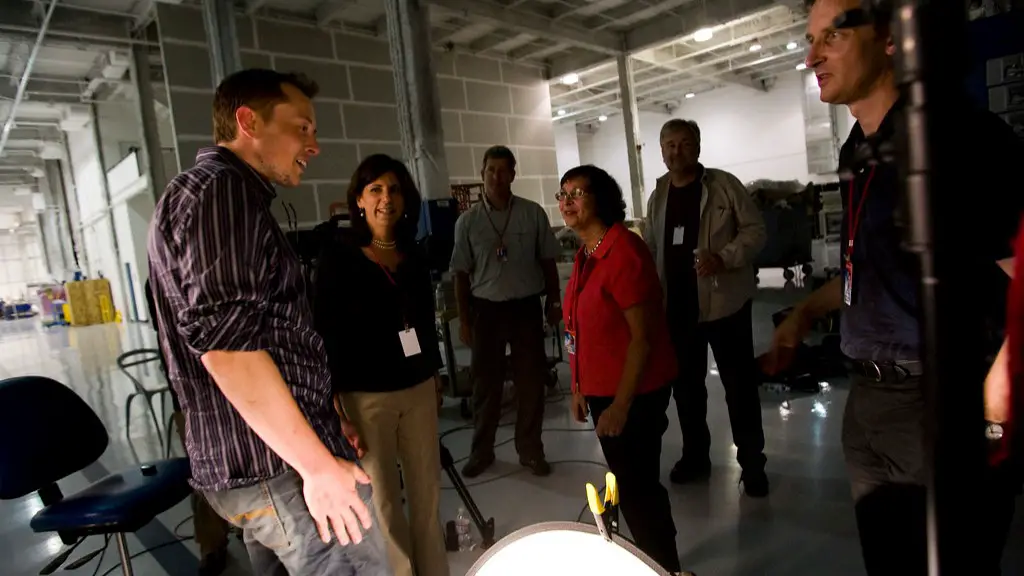Neurolink is an ambitious, futuristic project headed by one of the most brightest minds of our time – Elon Musk. The aim of this project is to create a brain-machine interface (BMI) which would allow humans to communicate with machines and each other instantly, without any barriers. Neurolink seeks to do this by implanting tiny brain electrodes into the cortex of the brain.
The technology behind Neurolink is designed to be non-invasive and FDA approved. It uses proprietary nanotechnology called ‘threads’ which are tiny, flexible, stainless steel probes approximately four to six micrometers in width, thinner than a human hair.The threads are designed to be inserted into the brain through a small hole in the skull and ultimately detect electrical signals sent from neurons within the brain.The idea is for people to then access whatever information is stored in the brain. This could hypothetically allow people to upload data, control machines and move robots with just the power of their mind.
Neurolink is also seeking to bridge the gap between biology and technology. By documenting fine changes in neural circuitry that are impossible to find with conventional medical scans, researchers could potentially unlock the secrets of neurodegenerative diseases like Parkinson’s and Alzheimer’s, and even help those living with paralysis regain movement.
An expert in neurotechnology, Professor Hilary Lee of the University of Bristol, states that it is still early days for neurolink and the technology still needs much research and development before it becomes commercially available. She also emphasizes that one challenge will be to reduce the potential risks of the technology and safely integrate it into our bodies.
Neurolink has the potential to revolutionize the way humans interact with each other and with technology. On one hand, it could enable us to communicate intuitively, receiving and sharing information simultaneously, just like a direct neural link. It could also make traditional computing easier, faster and more reliable. On the other hand, it could make it much easier for tech companies to foresee and exploit our thoughts and decisions, leading to a great deal of privacy concerns.
In conclusion, Neurolink could be a major step forward for science, technology and human communications. There are still a lot of uncertainties, in terms of its development, practicality, cost and so on, but it could change the way technology and humans interact in the future.
Neurolink Technology
Neurolink technology was designed to merge the digital world with our biology. The technology behind Neurolink is proprietary nanotechnology developed by its research and development experts.
The basic concept is to use tiny, flexible, stainless steel wires, or ‘threads’, that are smaller than a human hair. These threads are inserted into the brain through a small hole in the skull, in order to detect electrical signals sent by neurons. Researchers also believe that this technology could potentially be used to measure and record physiological changes in the brain, such as blood flow and neurotransmitters levels, which would help to diagnose and treat a range of neurological conditions.
This technology could be beneficial in various domains such as healthcare, sports, education, and military applications, where it could enable people to receive and share information instantly. This could help to improve brain mapping processes, such as those used in neurological research. Additionally, it could help to enable more accurate, automated monitoring of patients with a range of neurological diseases.
Neurolink could also enable people to control machines, robots and objects with the power of their minds, to varying degrees.
Furthermore, Neurolink is being developed in an open source, ethical and transparent manner, which has received positive feedback from the technology and medical communities. However, as with any new technology, it is important that Neurolink is used with consent, with clear, informed regulations on its deployment.
Barriers To Neurolink
Despite the tremendous potential of Neurolink, there still remain various issues that need to be resolved before it can become a mainstream, viable technology.
For example, the technology is still in its early stages of development and requires substantial research and development, before it can be deployed in a commercially viable way. Additionally, the technology needs to be proven to be safe and effective, with minimal risk of harm to users. As with any technology, the potential risks need to be taken into account, such as the potential for data manipulation.
Another challenge is the lack of expertise in the field of neuroscience, particularly in terms of understanding how the human brain works and how it might react to the Neurolink technology. It is important that any potential users understand the potential risks involved when using Neurolink, and the potential implications for their own health.
Additionally, the cost of Neurolink technology is also a concern. Although the cost per device is not yet clear, it is likely to be much higher than traditional medical scans and treatments.
Implications
If successfully developed, Neurolink could revolutionize the way humans interact with each other and with technology. It could enable people to send and receive information in a direct and intuitive way, and it could dramatically improve traditional computing.
The ethical, legal and social implications of Neurolink should also be considered. The technology could potentially be used to manipulate people’s decisions without their knowledge, and companies could use it to track and exploit people’s thoughts and decisions. To ensure that people’s rights and privacy are respected, appropriate safeguards and regulations need to be put in place for any potential users of the technology.
In conclusion, Neurolink has the potential to revolutionize the way humans interact with each other and the technology, but there are still many uncertainties as to how the technology will be developed, used, and regulated in the future.
Ethical Considerations
The development and use of Neurolink raises a range of ethical considerations. Firstly, whenever researching, developing and using technology, it is important to consider its potential impact on both individuals and society as a whole.
It is also important to consider individuals’ right to privacy and autonomy, as the Neurolink technology could make it easier for companies to track and exploit people’s thoughts and decisions. Additionally, there is also a risk of data manipulation, thus it is essential that regulation is applied to ensure that people’s rights and privacy are protected.
The flow of information is another important ethical consideration. As Neurolink enables people to send and receive data at incredible speeds, it is important to ensure that this data is circulated responsibly and securely. Additionally, this technology should be used with the consent of the individuals involved, and those considering using it should be aware of any potential risks.
Finally, there is the potential for Neurolink to amplify social disparities and widen the digital divide. It is essential that Neurolink is developed and deployed in an equitable manner, so that it is accessible to those who need it, regardless of social or economic status.
Future Of Neurolink
Despite the various ethical considerations and barriers identified, the future of Neurolink is still unforeseeable. As it stands, the technology is still in its infancy, and it remains to be seen whether it can be developed and deployed safely and effectively on a large scale.
A number of well-known technology companies are already investing heavily in this technology, and more research is being conducted to explore its potential. Additionally, the scientific community is putting immense efforts into making the technology more affordable and widely available, in order make sure that it can benefit everyone.
The Neurolink project has the potential to revolutionize how we interact with each other and with technology, however its full potential remains to be seen. It serves as an ambitious example of the possibilities of technology, and its development could have far-reaching implications for our future.



